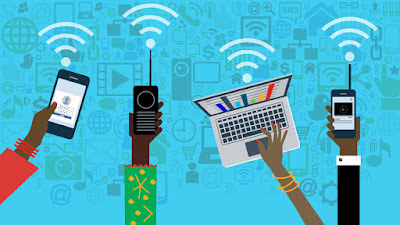IS USING INTERNET SAFE?


Infect a computer
There are dozens of
ways that a computer can become infected with spyware, viruses, and / or
malware. Below may be a list of the way your computer devices can get infected.
The list is formed starting with the foremost common.
One of the most common
forms of computer infection is when a user accepts what he sees on the screen
without reading the message before continuing. For example:
While browsing the web,
a billboard or window appears saying that your computer is infected or that it
needs a plug-in. Without fully understanding what you're receiving, you accept
the notice.
When installing or
updating a program, you are asked (often the checkboxes are already checked) to
install additional programs that you may not want or are designed to monitor
the use of the program.
Tip: When installing a
program, you are given the options between automatic and custom installation.
If you're installing something from the internet, it's best to do a custom
install to make sure nothing is added or changed during the installation.
Download any
infected software
When downloading any
software (programs, utilities, games, updates, demos, etc.) from the Internet,
be sure to download the software from a reliable source. Make sure to run your
downloads through your
antivirus and spyware scanners upon completion. During the installation
process, read all the instructions on what program you are installing.
Tip: You can help
yourself to check if a website is trustworthy using tools like WOT.
Open email attachments
As a general rule of
thumb, don't open the email you didn't expect to receive. Devices can become
infected when users open email attachments that contain malicious code. Even if
the message is from a co-worker, friend, or family member, always be careful
before opening a link or downloading an attachment.
Insert or connect an infected USB, disk
or drive
Any disk, drive or USB
connected or inserted into your computer may be infected with a virus. A common
tactic used by hackers to gain access to a network is leaving behind a USB
drive with malicious code. Then when a user places the USB stick in their
computer, they get infected with an epidemic or computer virus.
Note: This same rule applies to any network
drive. If another computer has access to yours or to a drive accessible from it,
a virus can move between computers and other devices on a network.
Visit unknown links
If a malicious person
has designed a website, they could give you access, send malicious files, or
obtain confidential information about you. You always need to take care and
distrust any link that involves you by chat, email or SMS.
Note: a commonly used phishing tactic is to
make a link or page look legitimate so that you give out data, but it actually
redirects you to where the hacker wants.
Do not perform updates
Many of the updates,
especially those related to Microsoft Windows, are security-oriented. Always
keep your operating system and your programs up to date. The plug-ins
associated with your browser can also contain security vulnerabilities. To make
sure you have the latest versions, you can run the 'Computer Hope' tool to
check the installed plugins and their versions.
Pirating software, music, or movies
If you or someone who
uses your computer participates in a service to exchange copyrighted music,
movies or software, you may be at risk. Sometimes these files and programs
contain viruses, spyware, Trojans, or malicious software, additionally to what
you think that you're downloading.
Not having antivirus
If you're operating
with a computer that has Microsoft Windows, it's recommended that you simply
have some sort of antivirus,
antispyware or malware protection. This software can remove any existing
viruses and spyware, as well as help prevent future infections.
Comments
Post a Comment